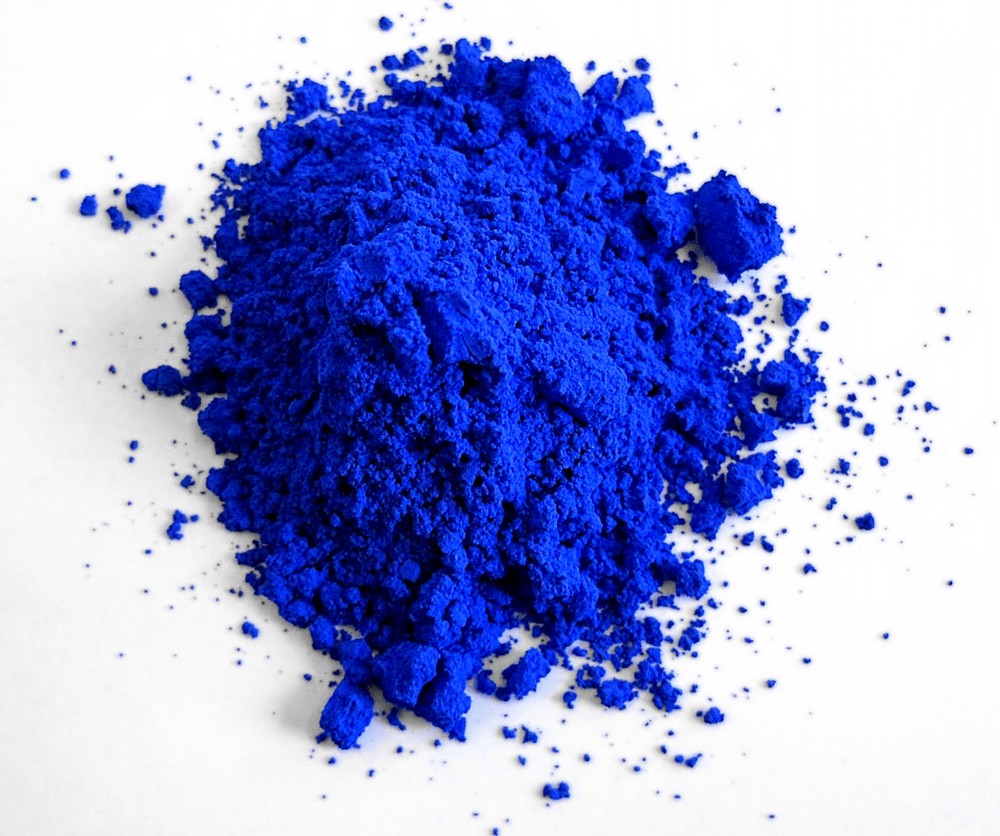Indeed:
It’s called YInMn.
Like all good discoveries, the new inorganic pigment was identified by coincidence. A team of chemists at Oregon State University (OSU), led by Mas Subramanian, was experimenting with rare earth elements while developing materials for use in electronics in 2009 when the pigment was accidentally created.
Andrew Smith, a graduate student at the time, mixed Yttrium, Indium, Manganese, and Oxygen at about 2000 °F. What emerged from the furnace was a never-before-seen brilliant blue compound. Subramanian understood immediately that his team stumbled on a major discovery.
And now it is available commercially.
Good to see the graduate student who actually did this getting a name check, along with his boss.
Who (the boss) also says:
“The fact that this pigment was synthesized at such high temperatures signaled that this new compound was extremely stable, a property long sought in a blue pigment,” …
I wonder if this new blue will find its way into architecture, if only as a way to get some otherwise so-so building noticed. My bet is: soon.
Subramanian and his team are now trying to make further colour discoveries, this time on purpose, which may not work so well:
Since the discovery, Subramanian and his team have expanded their research, producing a range of new pigments, from bright oranges to shades of purple, turquoise, and green. They continue to search for a new stable, heat-reflecting, and brilliant red, calling it “the most elusive color to synthesize.”
But while they’re deliberately trying to do all that, who knows what a junior member of the team might stumble upon next?
Much of scientific advance seems to be rooted in the ability to spot the significance of a happy accident.
Late editorial edition at the bottom of this piece:
An earlier version of this article identified YInMn as the first shade of blue created in 200 years. However, it is instead the first inorganic blue pigment invented in the same time frame.
Still good stuff though, if the rest of the report is right.


I wonder if it will be like blue LEDs. They are everywhere now. Anything without a blue LED, or a white one (made possible by the same advance that made blue ones possible), looks a bit old fashioned.